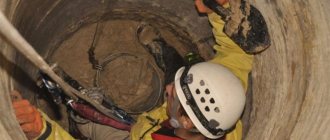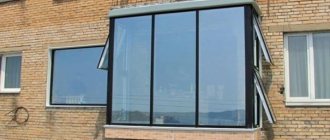Artificial drainage
If there are no such conditions, you can make artificial drainage of the area with your own hands. There are various ways to drain a site.
Before laying the foundation of dacha buildings, materials are laid that allow moisture to pass through well.
If necessary, drainage of the entire area can be arranged. Its arrangement is most important in areas with a high clay content, since they drain water very poorly.
Types of drainage systems
There are a huge number of drainage systems in the world. Each of them is designed for specific conditions and is used in a specific area. However, for those who want to know how to make drainage on a site, there is no need to master such knowledge. Let's consider the simplest options available for installation to people who do not have special knowledge and skills.
Simplified, drainage systems are divided into two types:
- Superficial.
- Deep.
Each of them, in turn, has its own subtypes and modifications, differing in structure, purpose and place of application.
Surface drainage
Example of a surface drainage system
Surface type drainage is the simplest in design and is designed to drain primarily the mass of water accumulated on the site from excessive precipitation. It is also effective against water accumulation resulting from man-made processes (watering the lawn, washing a car, draining a swimming pool, etc.). It is installed on asphalt, concrete or tiled paths and platforms, as well as near buildings, houses, garages. Surface drainage is divided into two types according to its structure:
- Point (local).
- Linear.
Spot surface drainage
This is the easiest way to drain a site. It is located in areas of greatest stagnation of water. This includes the so-called storm water inlets, designed to quickly eliminate the consequences of showers, snowfalls and active melting of the snow mass in the spring. Local drainage is often combined with linear drainage. It is mainly installed under house gutters, at sinks, near garage doors, and in places with low relief on sidewalks and roads.
Linear surface drainage
The structure of a linear drainage system is more complex. It includes channels, trays, cleaning devices (sand traps) and protective grilles. The drainage catches a large volume of water over an extended stretch. Its arrangement involves the use of a large number of consumables and preparatory work. In addition, the base must be concreted before installing the components.
Deep
Deep drainage
Another modification of drainage is deep. Purpose - to reduce the upper value of the depth of water in the ground in a certain place. Structurally, it is a network of drainage pipes or drains connected in a certain way (the best way to quickly remove moisture). This type of drainage is often used to drain the soil under the foundation of a house.
They are also placed on the rest of the territory to a depth of 1.5 meters. The main feature in the installation of a deep drainage system is the obligatory observance of the rules for locating the drains at an angle - the water must flow to a special well. This parameter ranges from 2.2 to 3.1 cm per meter of pipe. However, this rule is easy to follow only if the terrain itself has at least a slight slope. In flat areas, the lack of drainage wells is eliminated. Moreover, the higher the angle of inclination of the drains, the less likely it is that they will silt during operation.
As you can see, without drainage wells, the deep modification of the system does not function. Their main purpose:
- Cleaning the system.
- Collection and removal of water.
- Moisture absorption.
Modifications of drainage wells
Correctly making deep drainage allows you to understand what modification of the drainage well will need to be installed on site. There are three main types of them:
- Rotary. The name already shows the use of wells - they are included in the structure of the system at the turns of the drains, as well as at their junctions. Wells can have different diameters and depths. Being small in size, they allow pipes to be cleaned only with a water jet under pressure. With a sufficient diameter, a person can easily pass into such a well to remove contaminants from the system.
- Water intakes. They collect water in places where there is no possibility of draining water from drains outside the territory. Water is pumped out of the well, and then it is taken away, drained, or used for secondary use on the farm.
- Absorbent. As the name suggests, the well absorbs the water collected by the drains. Then it is naturally absorbed into the deep layers of the soil. The advantage of the absorption option is that the accumulated mass of water does not need to be pumped out. The diameter of absorption wells reaches one and a half meters or more with a depth of two meters. It can absorb up to one and a half cubic meters of water per day.
Primitive drainage systems
All of the above types of drainage require the consumption of various materials (pipes, gratings, wells, receivers, etc.). However, for those who do not expect large expenses for draining their site, there are simpler drainage models:
- Open.
- Backfill.
Open drainage
Open drainage is essentially a trench with gently sloping reinforced walls. The depth of the drainage grooves reaches about 70 cm, and the width of the upper part is 50 cm. The angle of inclination of the walls is 30-40 degrees. The latter condition makes it possible to strengthen the drainage system and increase the rate of surface water collection.
Backfill drainage
Backfill drainage is the same drainage ditch with the only difference that its lower part is filled with coarse crushed stone, gravel or brick. It is covered with geotextile on top and sides to protect it from silting. The upper half of the groove (when the fabric material is laid) is filled with fine crushed stone or sand. The outer layer (about 20-30 cm) is laid with soil. The advantage of backfill drainage, when compared with open drainage, is that it does not change the landscape of the site.
Pipe placement
The drainage scheme for a site located on a slope is very simple. One ditch is dug across it, and the second - parallel to the base.
The communication of the ditches is ensured by connecting trenches. The lower ditch should provide water outlet into a stream or ditch.
Main types of groundwater drainage device
At the initial stage, the most suitable type of drainage is determined. Regarding a specific site, the systems are offered:
In the form of a local (local) construction. To a greater extent, this is drainage of underground structures (foundations), removal of groundwater from basements and floors located below zero. This means that the relevance of the work is very high, since the drainage of an area with a high groundwater level is being carried out.
In the form of a general system that drains either the entire site or a vast area of the territory.
According to the type, nicknamed soft due to the exclusion of the use of pipes. This type is created when water is removed in small volumes.
Closed drainage ditches
It is important to make good drainage in your summer cottage. Since constantly stepping over ditches is very inconvenient, closed-type drainage systems are much more popular.
Second option
For the second organization option you need:
- Dig a trench 1.5 shovels deep with a slope towards the drain.
- Cover it with geotextile, which will act as a filter to prevent silting of the ditch.
- Fill with expanded clay or crushed stone in a layer of about 10 cm.
- Pour sand.
- Fill the soil removed from the ditch back.
- Lay turf.
Types of dehumidification systems
There are a great variety of land drainage systems. Moreover, in different sources their classification may differ greatly from each other. In the case of drainage systems for suburban and summer cottages, it is recommended to use the simplest and most proven solutions.
Surface type drainage
Surface drainage is the simplest and most effective system. The main task is to drain the soil by draining water formed as a result of rainfall and uneven melting of snow.
Grids protect the open drainage system from large debris
A surface drainage system is constructed across the area of the site, around the house and adjacent buildings, near garage structures, warehouses and the courtyard. Surface drainage is divided into two subtypes:
- Point - in some sources referred to as local drainage. Used to collect and drain water from a certain place on the site. The main area of application is drainage of areas under drains, near entrance doors and gates, in the area where containers and watering taps are located. Often used as an emergency system if another type of drainage is overloaded.
- Linear - used to drain the entire area. It is a system consisting of receiving trays and channels arranged at a certain angle, ensuring a constant flow of water. The drainage system is equipped with filter grids and sand traps. Trays and drains are made of PVC, polypropylene, HDPE or polymer concrete.
When installing a surface drainage system, it is recommended to combine point and linear drainage. This will ensure the system operates most efficiently. If necessary, point and linear drainage can be combined with the system described below.
Deep drainage
Deep drainage is carried out in the form of a pipeline laid in places where constant drainage of the soil or lowering of the groundwater level is necessary. Drains are laid with a slope in the direction of water flow, which enters a collector, well or reservoir located outside the site.
The process of constructing deep drainage in a suburban area
For example, when installing a drainage system, when drains are laid to a depth of 0.9–1 m, the recommended distance between them is at least 9–11 m. On loamy soil under the same conditions, the step between drains is reduced to 7–9 m, and on clayey up to 4–5.5 m. More detailed data for different laying depths can be seen in the table below. Information taken from the book “Draining land for gardens” by A.M. Dumblyauskas.
When laying the pipe, the features of the terrain are observed. According to the technology, drains are laid from the highest to the lowest point on the site. If the area is relatively flat, then to impart a slope, a slope is formed along the bottom of the trench. The minimum slope level is 2 cm per 1 running meter of drainage pipe when constructing drainage in clay and loamy soil. For sandy soil, a slope of 3 cm per 1 meter is maintained.
Diagram of deep drainage device
When installing long drainage, a minimum slope along the entire length of the drainage route must be observed. For example, for a drainage system 15 m long, the minimum level difference between the starting and ending points of the route will be at least 30 cm.
If possible, it is recommended to exceed the stated slope standards. This will ensure faster drainage and reduce the risk of silting and clogging of the drain. In addition, digging a trench with a large slope is much easier than measuring 1–2 cm.
Pottery drainage
Ditches with pipes laid inside them are called pottery drainage. It consists of a central pipe located diagonally across the section with pipes of smaller diameter connected on different sides. If the soil does not drain water well, pipes should be laid much more often.
For pottery drainage, you can use pipes made of plastic, cement or concrete. They can also be made from four stacked bricks. It is important to ensure that the required level of inclination is available. A water catcher is also required.
With drainage well
The drainage well is designed quite simply. It collects the upper groundwater, which is gradually filtered. Clean water flows into the lower layers of the soil. Several drainage wells are often made on the territory of the dacha.
To make a well use:
- Concrete perforated rings.
- A plastic ring with holes made in it.
- A piece of pipe with holes.
The bottom of the plastic ring or pipe is covered with crushed stone. After this, a cylindrical pit is installed to a depth of about 2 m.
The finished well does not need to be covered with a lid. It would be much more beautiful to fill the well with rubble or broken bricks, on top of which turf is laid. This design looks especially impressive on soil with a high clay content.
In areas with a large area, the pipe system becomes very branched. Excess moisture flows by gravity into a common collector, from which the filtration field enters.
How to make site drainage with your own hands - instructions
To get a complete answer to the question of how to properly make drainage on a site, you need to consider many of the factors given above. However, it is always better to begin the construction of even the simplest system after careful planning in accordance with the following algorithm:
- Draw up a detailed plan of the site, taking into account its topography and the movement of water flows. Naturally, only professionals can fully solve such a problem. The relief map of the site is compiled using a laser rangefinder and other geodetic instruments. If this is not possible, then you need to independently observe the direction of water flows and mark them on a schematic map of the site.
- Trenches are dug in accordance with the plan and technical requirements according to the project. Moreover, before you start laying the elements of the system, you need to wait for the rain and make sure that the flows do not stagnate in the trenches and go in the right direction. This will allow you to both make drainage at the dacha and avoid possible problems with modifications and additional costs.
- All elements are laid according to the instructions. These are pipes, trays, storm water inlets, filter material and other parts of the system and are connected (if necessary) to drainage wells according to the diagram.
- The cavities are filled with crushed stone, soil, and sand.
Soil type and drainage system
How to make drainage on a site in harmony with the type of soil? The correct question to answer this question will not only save on consumables, but also extend the life of the system. There are several options:
- In crushed stone and gravel soil, drains are laid without filtration material.
- No textiles are used in the clay. However, to prevent the pores of the pipe from becoming clogged, it is better to create a cushion of small crushed stone about 21.5 cm thick around the pipe.
- In soil with a predominance of loam, drains must be wrapped with geotextiles.
- In sand, the drains are wrapped in filter fabric and covered with a layer of crushed stone.
The task of arranging a drainage system for your own site consists of many factors. You can solve it in different ways - entrust the matter to a professional company or do it yourself. However, in order to avoid cost overruns and poor-quality results, it is better to independently calculate each stage of all work.
Landscaping and drainage
When a dacha is used not only for work, but also for recreation, its owners try to make the site as attractive as possible.
When landscaping the area, you should definitely consider the drainage system. It is best to arrange closed grooves. They decorate the landscape with their appearance.To ensure water drainage from the area near the house, water inlets are made. Water from the roof will flow into them through the tray. A sand trap is placed inside the water intake, which will prevent clogging of the drainage channels. The water receiver is covered with a perforated lid.
In the rest of the territory, the trenches can be lined with stone. This design will be an excellent design element for the site.
You should not place such a trench right in front of the house. It will fit perfectly into the garden area. In addition, collecting moisture in the trenches will ensure better growth of plants growing near them.
An open drainage ditch with a bridge across it will look very nice.
Photos of the drainage system on the site show how attractive they can look if properly designed.
Selection of materials and components
Table of components for surface modification drainage
| Name | Description and purpose |
| Drainage tray made of concrete with a galvanized stamped grid. | Removes moisture from the soil. Suitable for installation on sites and along paths. Depending on its dimensions, it has different throughput. Transfers weight up to one and a half tons. |
| Drainage tray with cast iron grate. | Designed for the same thing as in the above case. Load capacity up to twenty-five tons. Can be installed on roads. |
| A rainwater inlet made of plastic, including siphon partitions and a trash can. | Collects water. They are located in the place where water drains from the roofs of houses, garages, bathhouses, and sheds. Transfers weight up to one and a half tons. |
| Sand trap made of plastic and steel grate. | Included in the linear modification drainage system, it is used to collect sand and small mechanical particles. Sand traps are required for installation at the junction of drainage systems if the surface system is connected to the deep one. Carry loads up to one and a half tons. |
Trays and storm water inlets are the most important parts of the drainage system. They are made of steel, plastic, concrete, polymer concrete and reinforced concrete. They carry a load of up to twenty-five tons, depending on the dimensions they have different throughput. To carry out, for example, drainage of a site on clay soils with your own hands, you need to correctly calculate how much water flow will be per unit area of the site.
Table of components for deep drainage
| Name | Purpose and description |
| Corrugated pipe in a geotextile filter made of HDPE. Diameter value - up to 200 mm. | Designed for deep collection and drainage of water from the site and from under the foundation of the building. It is laid to a depth of up to four meters. The filter material prevents clogging and filling of the drainage pipe from the inside. |
| Corrugated HDPE drainage pipes coated with coconut coir. Diameter value - up to 200 mm. | Installed at a depth of up to four meters. Unlike geotextiles, coir has better durability and reclamation properties. |
| Shafts for wells made of HDPE. The diameter is up to 923 mm. | For creating all types of drainage wells. Maximum depth six meters. |
| Geotextiles. Polyester based filter fabric. | Used for all types of drainage. Filters out sand, silt, and small fractions of soil. Not affected by fungi, mold, microbes, insects and rodents. |
In addition to the main components (presented in the table), various couplings, rings, cuffs, bends, plugs and other consumables are used in drainage. The complete set depends on the individual characteristics of the drainage system for a particular location and is selected based on the characteristics of the topography, volume and depth of water in the ground.
Photo of drainage on the site
Total
Category: Instructions











